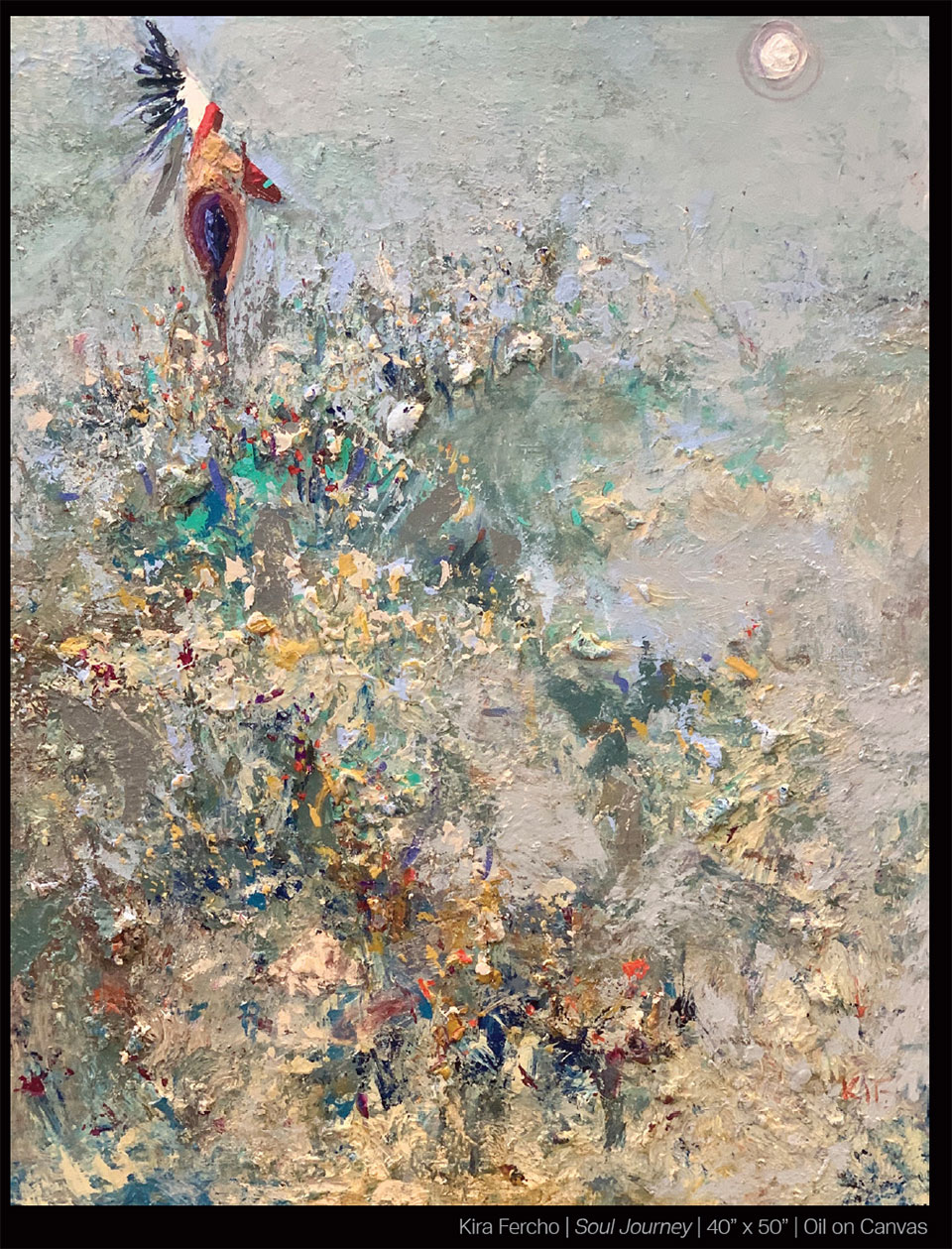Various Means
by Michele Corriel
For as long as civilization has existed, art has provided a social foundation for the way we view ourselves. In these stressful times, perhaps nothing has been more vital to our inner lives than reflecting, pondering, or interacting with art. Contemplating the mountain landscapes or the lush valleys that surround us, artists translate our environment into an ongoing dialogue.
Whether installing, representing, or creating art, how we acquire aesthetic objects and interact with them happens through various means. It may be a walk down Main Street and a stop into a gallery, it may be through architecture and installations, or it may be through newly procured collections. In whatever way it gets there, the richness that art brings into our lives is priceless.
Helping us to understand this journey, Western Home Journal spotlights four unique perspectives from those who facilitate the transformational act of art.
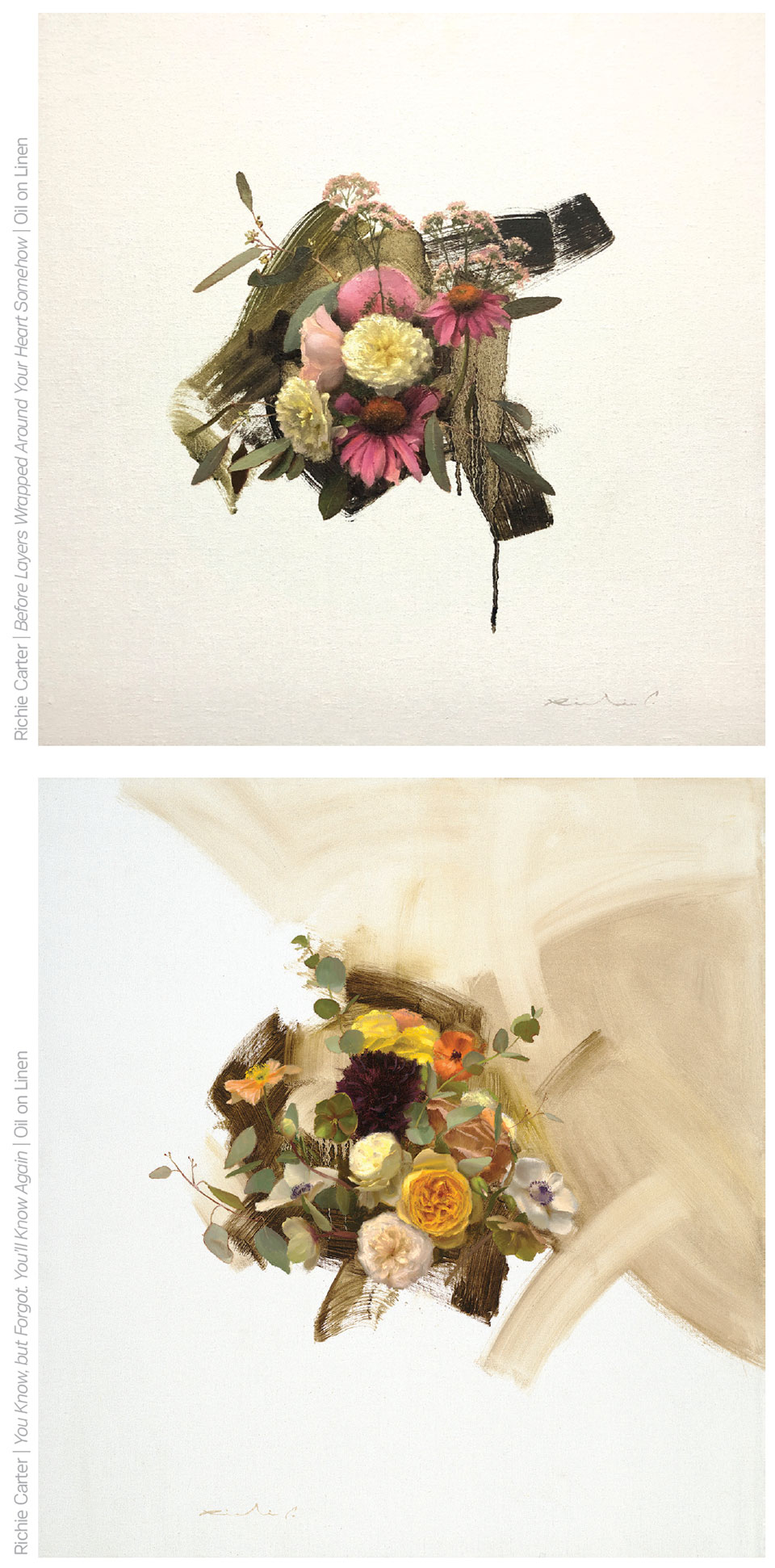
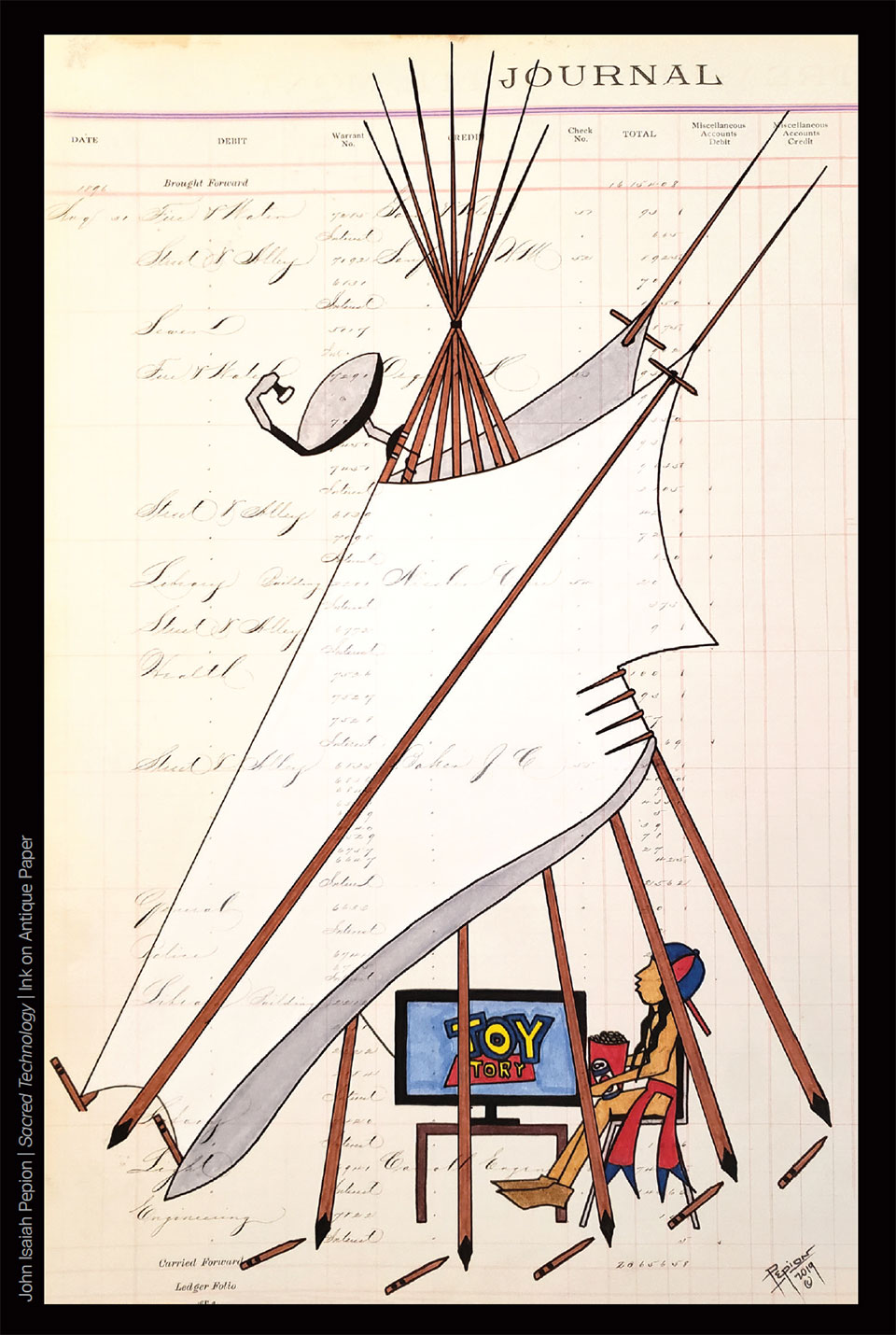
Refreshed
Old Main Gallery
With a focus on local and regional artists, new business owners Lindsey McCann and Micah Jastram are redefining the mission at Old Main Gallery, a staple of Bozeman’s downtown for over a century. Despite a harrowing worldwide pandemic and a temporary closure of the gallery, the couple found strength in their commitment to art.
The McCann-Jastram story started seven years ago when they moved from South Dakota to Bozeman on a whim. “I was overworked, stressed-out, and ready for a change,” McCann says. “We basically picked Bozeman out of a hat.” She called all the galleries and framing businesses, since she’d had experience in those areas. “Former owners Jim and Lynda Brown wanted to hire me as a framer at Old Main Gallery.”
A few weeks later, they arrived in Bozeman to meet with the Browns and get a feel for the community. “Right away, we were in love with the feeling of downtown Bozeman. After we met for an hour or so, I left for another interview,” McCann says. “Immediately, I got offers for two full-time positions.
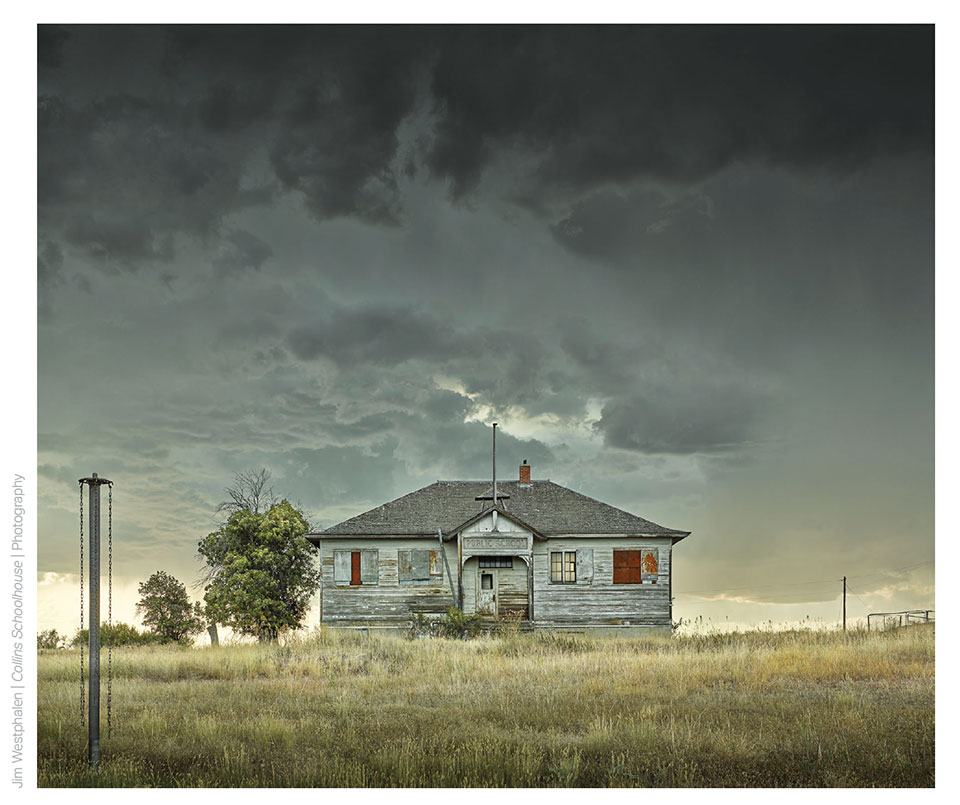
“To find artists making art for art’s sake instead of artists making work for commercial sales is the driving force of our gallery.”
–Lindsey McCann, Owner, Old Main Gallery
McCann went to school for fine art photography, but envisioned herself more as somebody who understood the business side of things. The fit with the gallery felt just right. Jastram, a percussionist and educator, has always been involved in the arts, especially in his current role as a member of the Bozeman Symphony Orchestra.
After a few years, the Browns began to discuss retiring and selling the business. “We considered buying it from them at that point, but the timing wasn’t right. In the end they sold to George Dorsey,” McCann says. “Under his ownership, he financed a substantial remodel and expanded the gallery.”
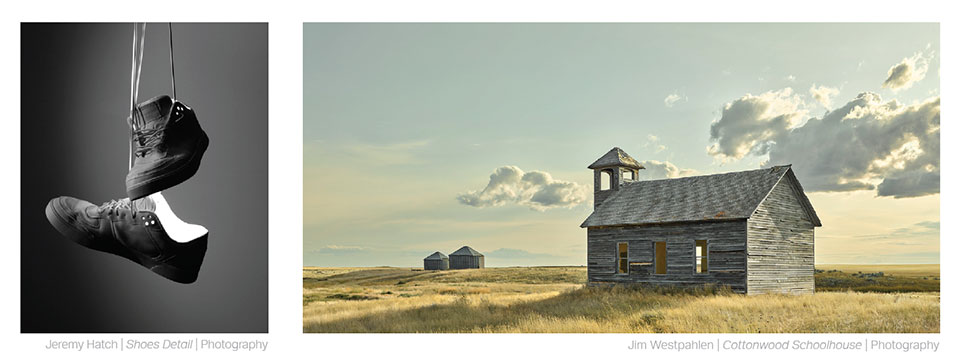
“I’ve thought about the gallery a lot. My goal is to focus on the local and regional artists, to allow artists to tell their stories and encourage them to create art, and not be as concerned with selling it.”
–Lindsey McCann, Owner, Old Main Gallery
Dorsey not only changed the physical appearance of the gallery but updated the aesthetics, showing contemporary artists and creating more of an upscale gallery feel.
Four years later, McCann and Jastram took over the gallery. “We bought it in January 2020, and went from being co-workers to employers. Then we faced a forced closure from the pandemic,” McCann says. “That was all incredibly terrifying. We’re looking at it with gratitude in our hearts, because it gave us a chance to streamline the business and hone in on what our values for Old Main are, rather than what it used to be.” Their objective remains the same for the framing side of the business.
“I’ve thought about the gallery a lot,” McCann says. “My goal is to focus on the local and regional artists, to allow artists to tell their stories and encourage them to create art, and not be as concerned with selling it.” She feels the sales will come naturally if the artist is creating the art they need to make.
One of the artists McCann believes in, Morgan Irons, a self-taught painter, studied the Old Masters and took workshops across the country. The clincher was when McCann met Irons and the artist told her, “These are pieces I just have to make and if you want to show them, great.”
“To find artists making art for art’s sake instead of artists making work for commercial sales is the driving force of our gallery,” McCann says. “That has really worked out for us. When there is a kind of honesty in the work, it resonates more with the buyer, rather than some typical western landscape.”
Richie Carter, another new artist to the gallery, brings just that kind of honesty and rawness to his subjects. Carter, from Kalispell, recently filled Old Main Gallery with his Montana twist on traditional painting. He uses the context-free backgrounds of the Spanish Baroque painters, and instead of black he uses white, instilling a spiritual purity to the pieces. In one painting of a single rose, rough, broad strokes belie the delicacy of the detailed petals. His work speaks to both the aesthetics of contemporary art and a long, rich tradition of painting.
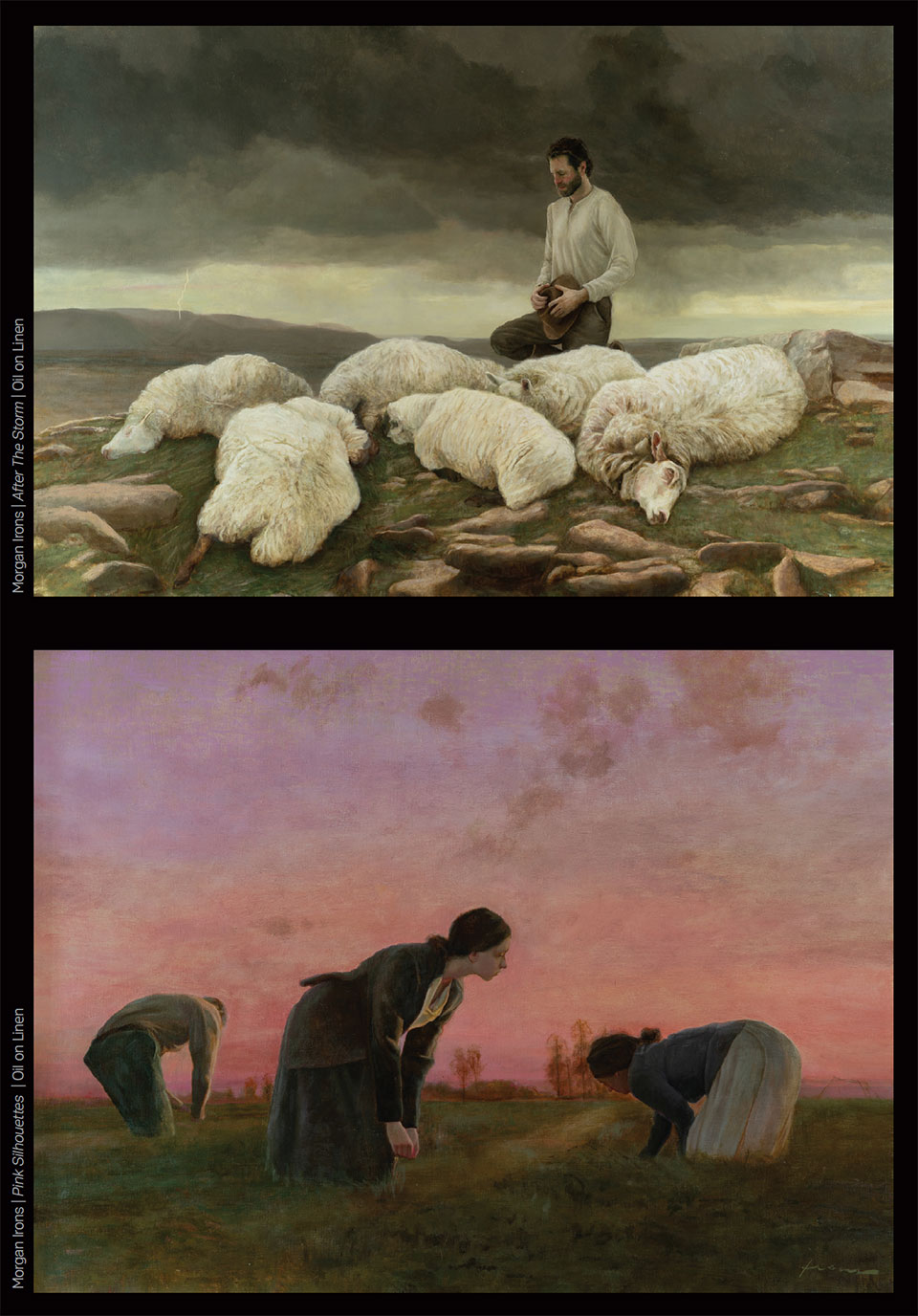
Dorsey introduced talented artists from the East Coast, but McCann wanted to focus more on local and regional artists. She doesn’t plan on changing much from the model Dorsey imposed on the business, including a monthly exhibition with an opening. “That encourages us to look for new work and the gallery feels fresh and exciting for people in town,” she says. “In addition, I would like to work more with students and faculty at Montana State University.”
Another artist McCann believes in is the Blackfoot artist John Isaiah Pepion, a third-generation artist. “He has an amazing sense of humor. He has a way of telling his story that’s humorous at times but can also be heartbreaking. I love and adore working with him.” Pepion’s work incorporates the narrative ledger art along with contemporary commentary on Native American experiences.
Post-COVID plans include getting more involved with public art, and engaging the wider community with the arts in Montana. “When I was in Sioux Falls they had a sculpture walk once a year,” McCann says. “The entire community was involved in it. The public has a map to guide them through the sculpture walk, and at the end of the season there’s a community choice for best sculpture. I think things like that are important to the community, and it is something Bozeman could really get into.”
McCann has no doubt that Old Main Gallery will continue to be a staple in the art community downtown. “Old Main has been here since 1964 and it’s not going anywhere,“ she says with a smile.
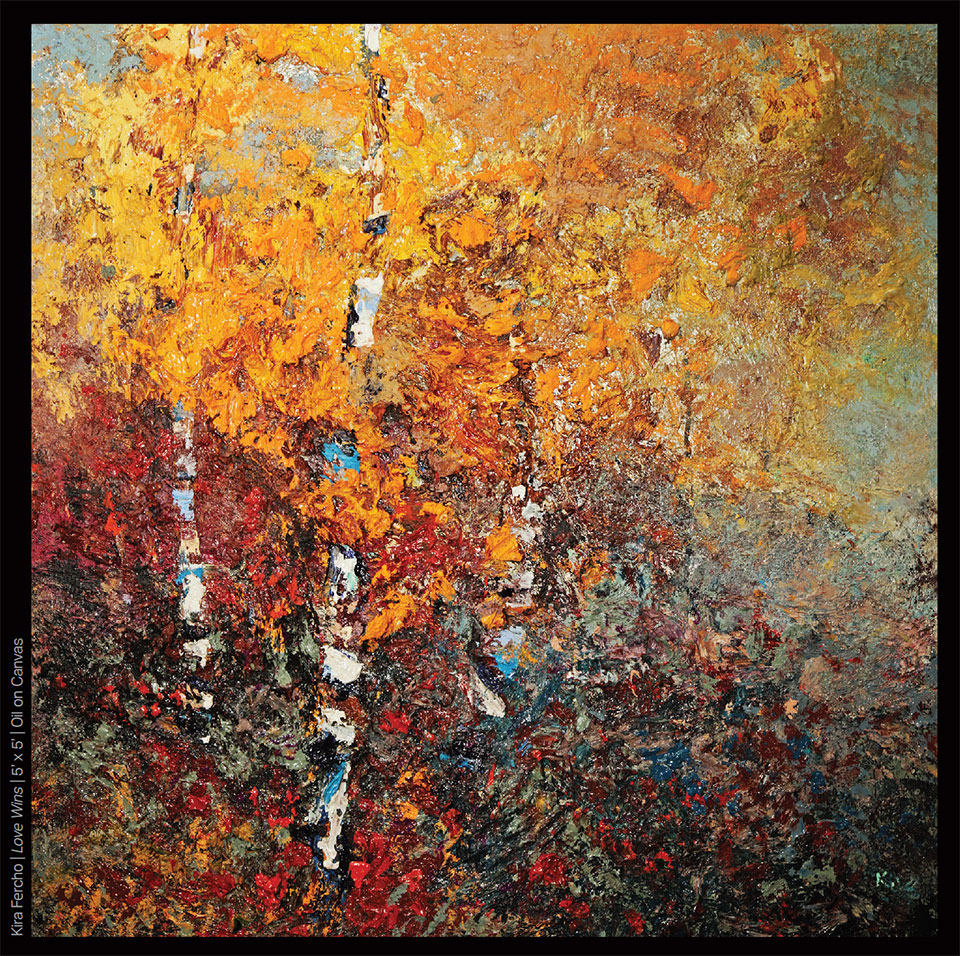
An Artist in Transformational Times
Kira Fercho
Being creative during a pandemic is not unheard of—William Shakespeare wrote King Lear and Macbeth, Isaac Newton came up with his theory of gravity, and Edvard Munch painted one of his most famous works after a bout with the Spanish Flu in 1919. For oil painter Kira Fercho, quarantine provided the time she needed to look her fears in the eye, enriching her art in the process.
“Right before COVID hit, I paid for a year’s worth of business coaching,” Fercho says. “I paid for that and boom—all of my shows got cancelled, including my annual show at the CM Russell Museum. Once all my shows canceled and I couldn’t open my gallery, I thought nothing could be scarier than that. I could either wallow in it, or open my eyes to what’s next. I believe the pendulum swings and I just needed to keep my head in a good place and be positive.”
“This summer ended up being the best financially and personally. I enjoyed being home in my studio in Billings and started to get some big projects rolling.” For Fercho, the turning point was being coached to look at her fears. When she did, she realized how unsubstantiated most of them were. Her life now is filled with a deep acceptance of herself, her life, her paintings, and what she wants to be doing. “I was getting in my own way,” she says. “On a personal level, I started feeling more comfortable in my own skin. I didn’t feel like I had to chase after things; those things would come to me.”
As a result of the emotional change, Kira’s work changed. Her palette evolved. The color chords matured to become more sophisticated, and technically more complicated. For example, in her painting, Love For Big Sky, the aspens bend slightly to allow the viewer entry into the piece. The landscape pulls the eye toward the lake and a distant mountain. Each layer of color speaks to the one underneath. The piece evokes a sense of calm while at the same time, barely containing the energy of nature. Even the sky, visible at the very top, asks the viewer to consider it. Every part of the painting speaks through the impasto application of thick, rich, seductive paint.
“On a personal level, I started feeling more comfortable in my own skin. I didn’t feel like I had to chase after things; those things would come to me.”
–Kira Fercho, Artist
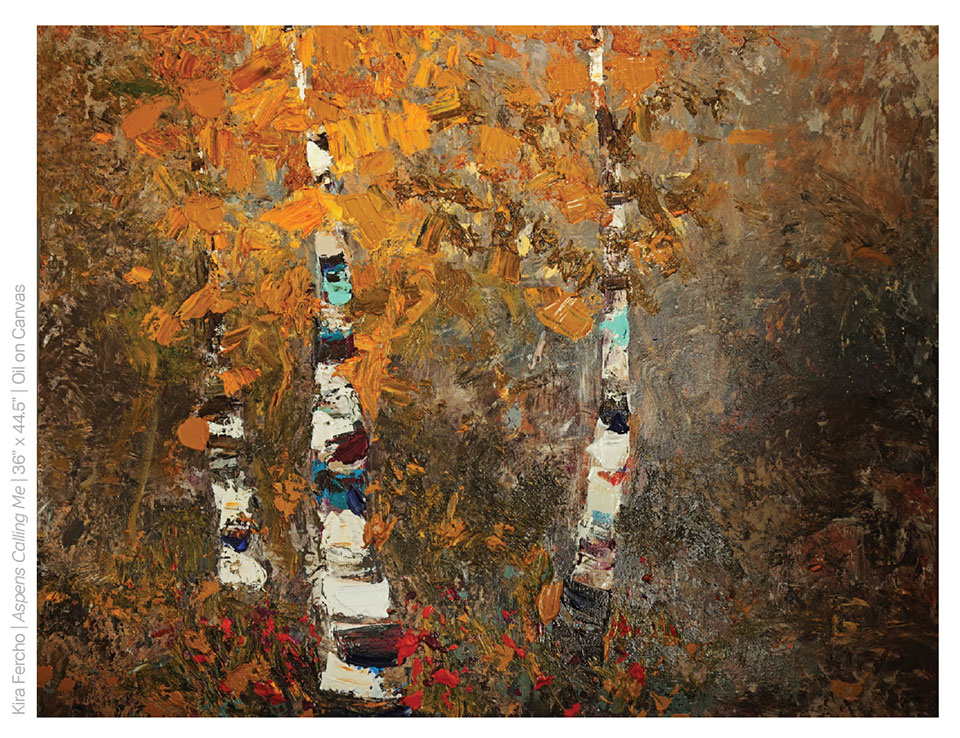
“The paintings have a freer feeling to them. I’ve grown into my next stage. Not everybody is going to love the changes, but it’s a more masterful place to be.”
–Kira Fercho, Artist
Although the images are recognizable, the hint of abstractness enables the viewer to participate in the experience. Fercho explains, “The paintings have a freer feeling to them. I’ve grown into my next stage. Not everybody is going to love the changes, but it’s a more masterful place to be.” Fercho noted that as humans we get comfortable with where we are; we’re so habitual that we stunt our own growth at times.
“My passion is commissions. I’ve painted Montana for 25 years and I feel that I know our landscape and our animals pretty well. Even in abstraction, the animals are recognizable. My clients tell me their dream and my job as the technician is to get them there.” When the painting is almost done my clients will get an opportunity to comment on the piece or as Fercho says, “To bring the ship into harbor.”
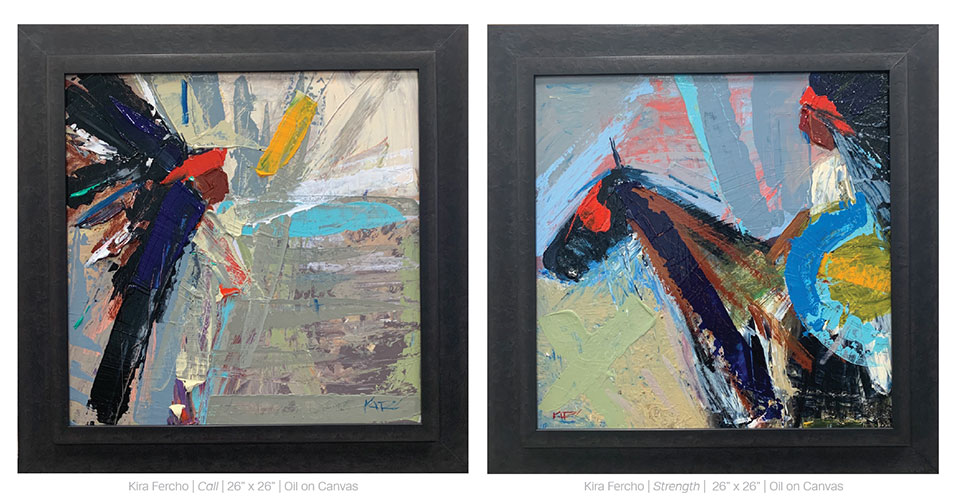
“I’m an artist but I’m also a well-trained painting engineer who wants everything done to perfection,” she says, referring to everything from the way canvases are made to the quality of paint and finishes. “You’re putting these paintings into these great homes. They have to feel that they belong there. My paintings are made to last.” Fercho also noted that her paintings are museum-quality, one-of-a-kind works. “I am the only artist I know of who owns the rights to all of my work and materials. I don’t do prints. I have an inventory list of the paintings I have sold. I do authenticity cards for my work. I have a copyright attorney I work with. It’s very important to me that I protect my work as if it were my child. Because of the steps I have put in to do this, my work increases in market value yearly. I want my customers to have a work of art that means something and has a long-term value.”
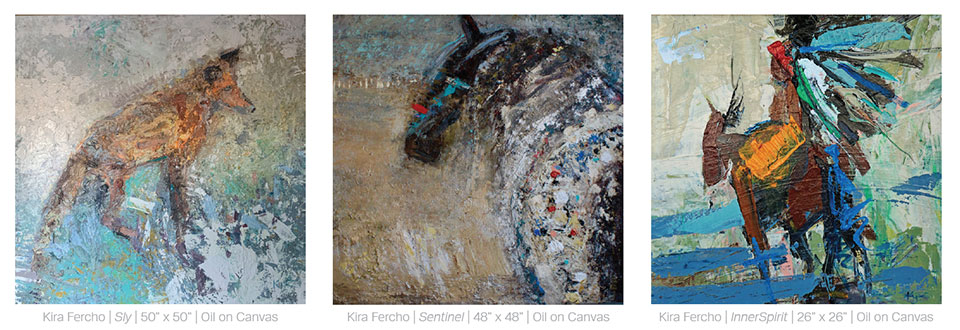
“I want my customers to have a work of art that means something and has a long-term value.” —Kira Fercho, Artist
–Kira Fercho, Artist
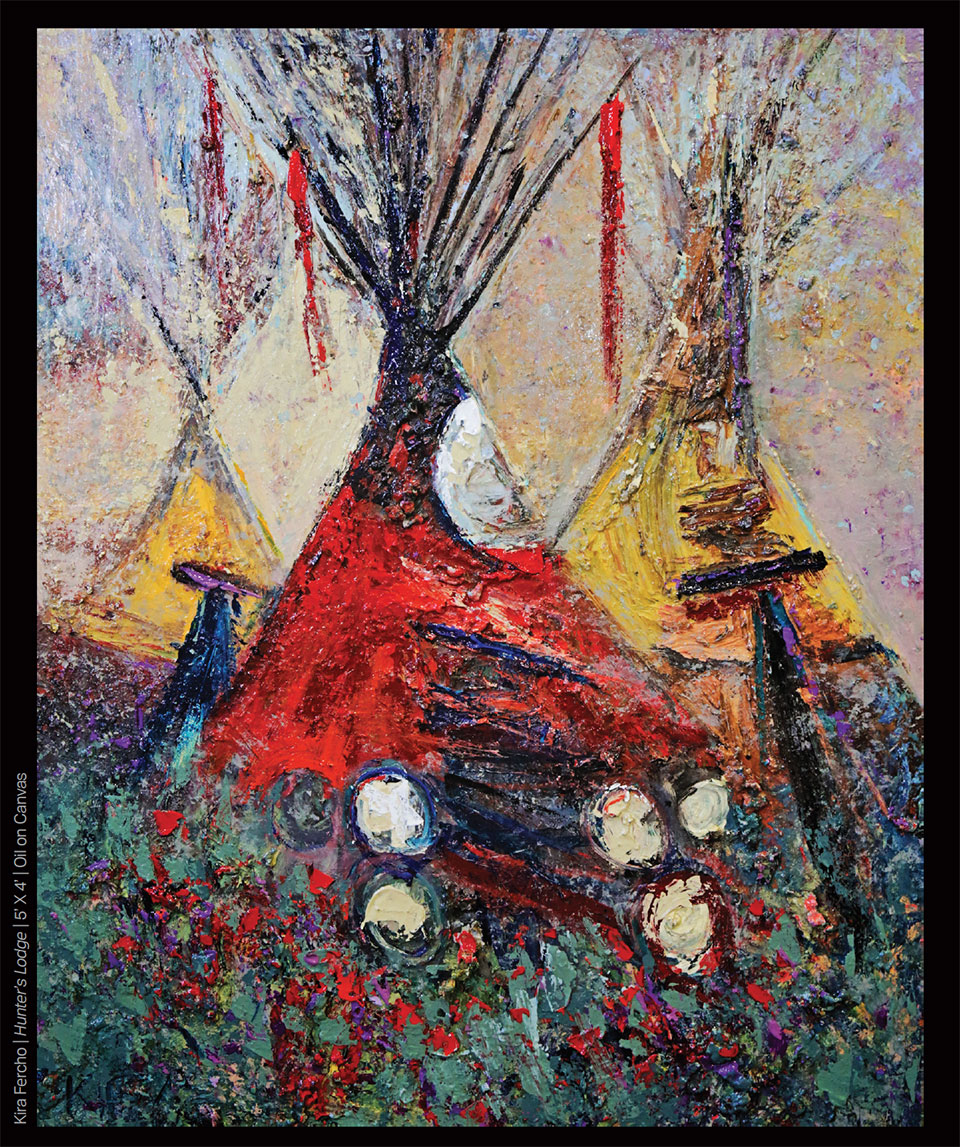
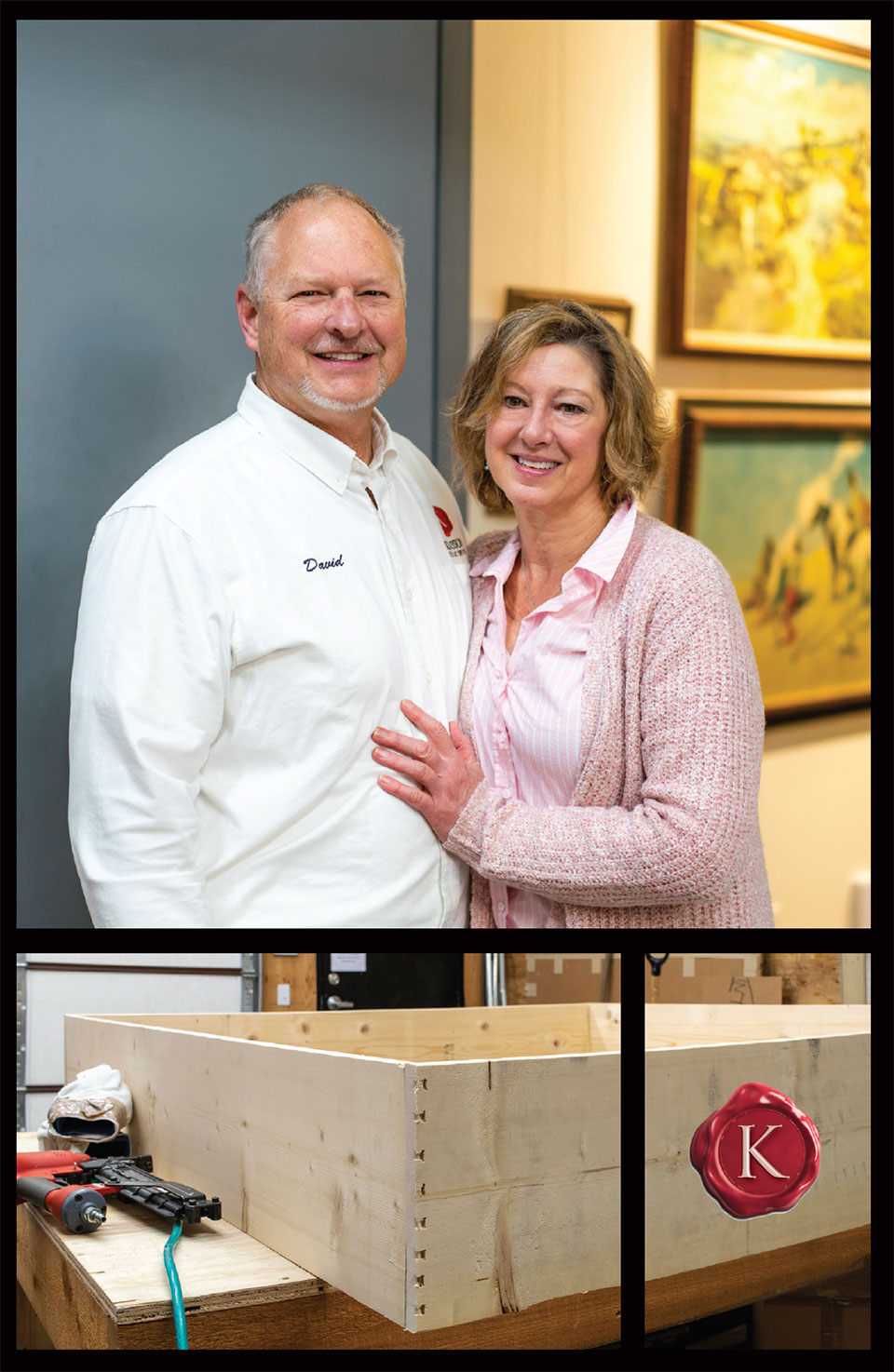
Managing Growth
Klasson Fine Art Services
As Bozeman grows, so does Klasson Fine Art Services, assisting clients with storage, transportation, installation, and data management for large art collections. Owner David Klasson finds his business responding to the uptick in real estate transactions by offering additional services to clients as they acquire and disperse pieces in their fine art collection. Included in those services is a new database art management system. “It has brought our business to another level of service, helping our clients with real-time information about their art collections,” Klasson says.
“Much of our business revolves around the sale of homes and ranches,” Klasson says. If someone buys a house, they want to begin collecting artwork right away and they ship it to our warehouse to hold until they are ready for the install. On the other hand, if someone is selling a house, they need Klasson’s service to pick up the artwork, crate it, document it, and send it to another residence, an auction house, or another gallery. Or perhaps the art lives in the warehouse until the client decides what they want to do with the art. As a result, Klasson’s warehouse activity is increasing.
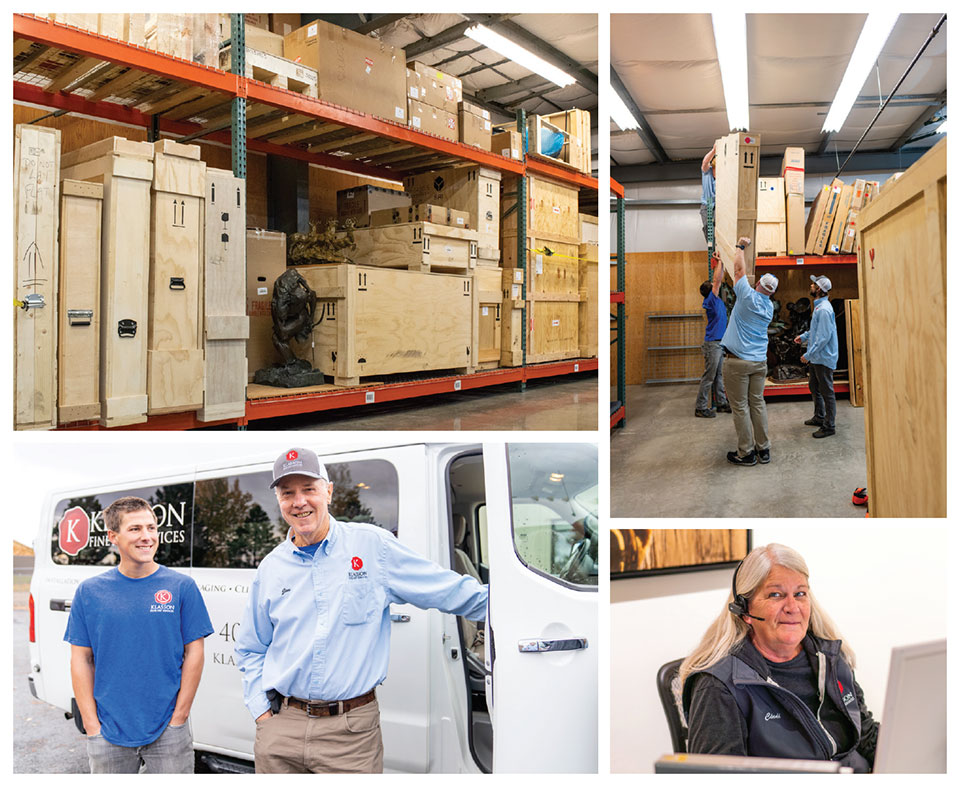
“We’ve been working all over the state collecting art.”
–David Klasson, Owner, Klasson Fine Art Services
“We’ve been working all over the state collecting art,” Klasson says. “Warehouse activity is on the rise, which drives the transportation side of the business. Some of the art has to be crated and packaged. On the back end, we bring it to the new location and install it. The installation part of the business involves a great deal of technical expertise; it’s not just putting a nail in a wall.”
The majority of their work is in Montana, but Klasson Fine Art Services has gone to Texas, Colorado, and California to transport art collections and for installations. Some clients prefer to have their art on a dedicated truck from start to finish. “We’ll go anywhere,” he notes. “Part of where we are taking the business is in our ability to go anywhere to do art installations.”
Klasson’s partner, Beth Kennedy, works with clients, designers, art advisors, and galleries to obtain fact sheets, images, and any other available information about the artwork, which is then added into the database. The information is sent directly to the client, upon request, through an encrypted URL that is unique to each client. “It’s a service we didn’t start out doing, but we found that our clients really appreciated the ability to view their art, as needed,” Klasson states.
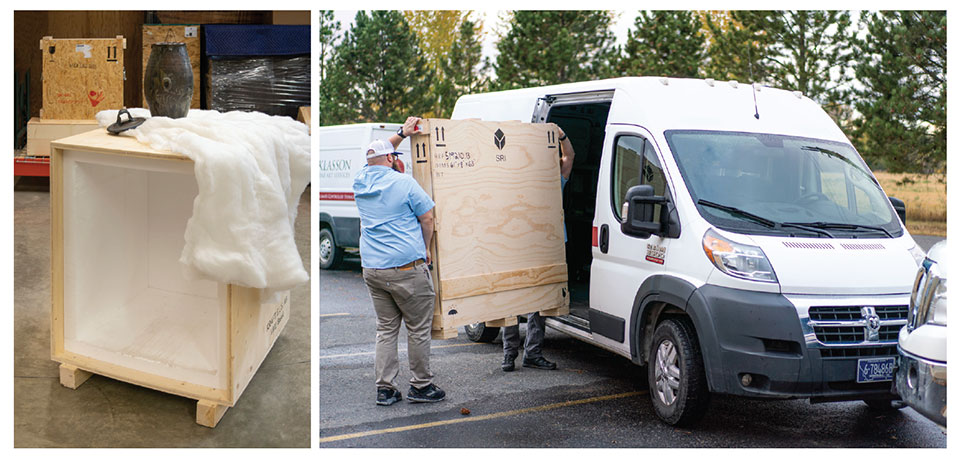
This gives us a way to manage the collection for the client, making it easy for them to know where their art collection is located as well as the details of every piece,” Kennedy says. “The database benefits owners, property managers, and designers with inventory management services. It allows the owners to see their art collection, regardless of where they are.”
Art collections accumulate over the course of years. Our database allows clients to view the art, whether it is through an iPad, a phone, or a computer. The link uses an encrypted network that remains unique to each client, and is sent directly to them for private viewing. The URL is secure and the data is backed up every day. “They can pull up a view of their collection at any time. As pieces arrive to us, we are able to add them to their private view,” Klasson says. “We can take the inventory that a ranch manager or personal assistant will send us that lists a complete compilation of the artworks in a home. I can then designate those pieces to their private list. This database pinpoints exactly where each piece of art is located.”
“Our goal is to carry our core company values to everything we do – from our first contact with a client on the phone or in an email to the work we do in the field – we feel our employees do an amazing job in demonstrating the flexibility necessary to meet the requirements of our clients,”
–David Klasson, Owner, Klasson Fine Art Services
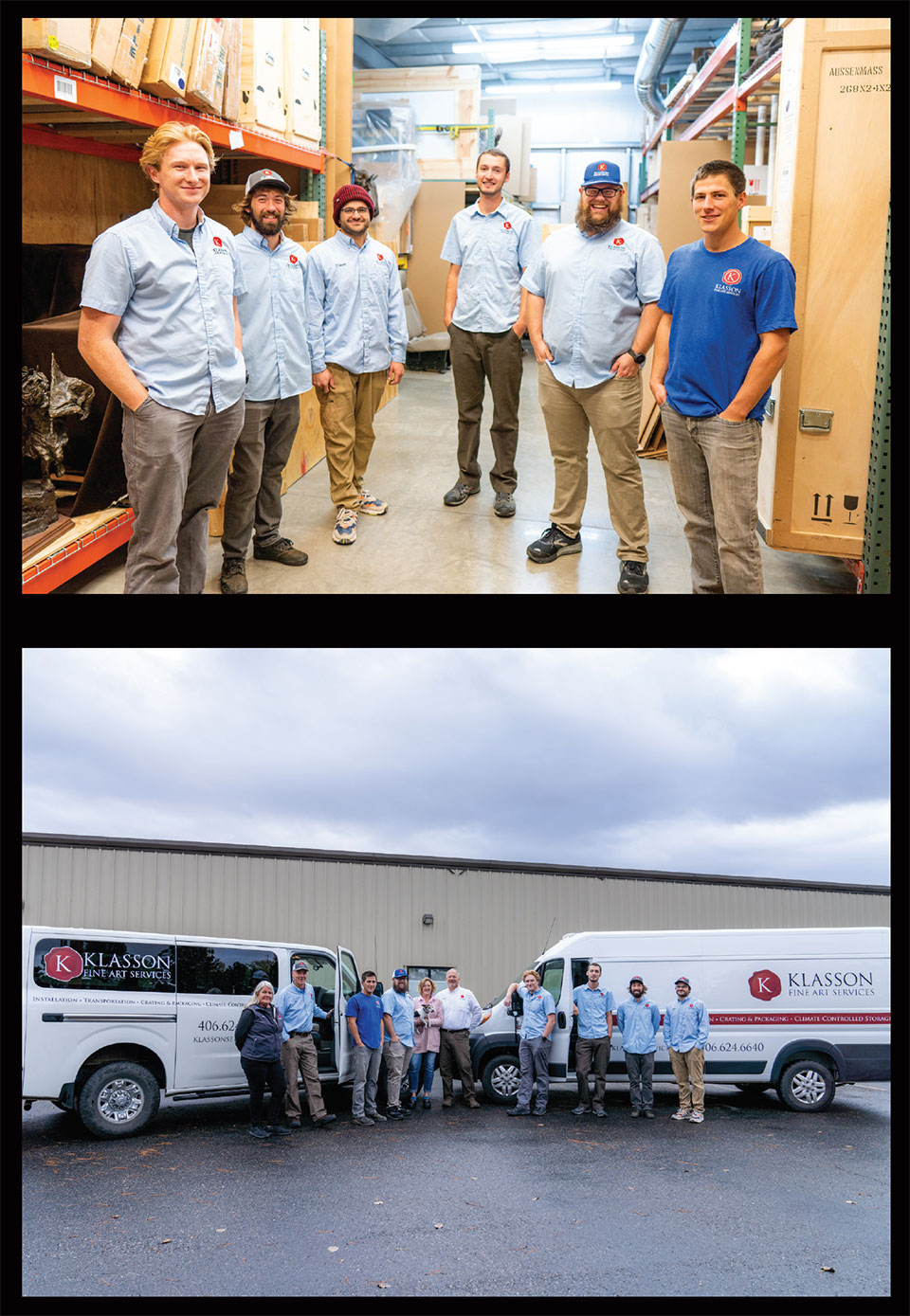
In addition to the database, Klasson Fine Art Services provides a climate-controlled warehouse. “This means we control the humidity, heat, and cooling of our space according to what is best for fine art storage. Our facility is maintained by a full-time staff, and kept under 24-hour surveillance, which is monitored by an off-site security company. We feel we are the perfect stewards for all types of artwork, large and small, as well as sculptures and other valuables, meeting the needs of packing, crating, transportation, storage, and installation of the art,” Klasson explains.
A year ago, Klasson Fine Art Services began to work with clients on evacuation plans. “People are starting to think about how to get their artworks to a safe place in the case of a natural disaster. Having these plans in place is a vital part of the logistics when working with large, delicate art collections. We have measures in place for large trucks, phone call protocols, and in-depth plans so if an evacuation is necessary everything is in place to move the artworks to safety,” he says.
“Because we are doing more collections and transport around the state and beyond, we are increasing our livery of trucks this year,” Klasson notes. The new vehicles are all-wheel or four-wheel drive climate-controlled box vans. “We are converting all the vehicles to be four-wheel or all-wheel drive for better access and traction in difficult-to-reach locations. When we go out to these ranches, with limited access, we need four-wheel drive, especially with a high-end art collection in the back,” he says.
“Our services would not be complete without our wonderful staff and installers, who maintain the integrity of our company through their excellent customer and client service and technical expertise. Our goal is to carry our core company values to everything we do – from our first contact with a client on the phone or in an email to the work we do in the field – we feel our employees do an amazing job in demonstrating the flexibility necessary to meet the requirements of our clients,” Klasson says.
